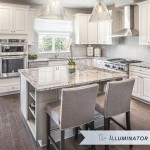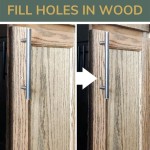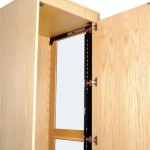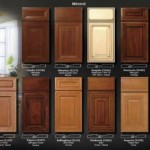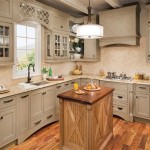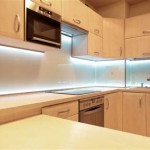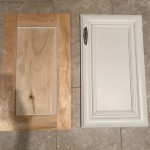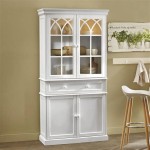What Are The Best Kitchen Cabinet Hinges?
Kitchen cabinet hinges, often overlooked, are critical components that contribute significantly to the functionality, durability, and overall aesthetic of kitchen cabinetry. Selecting the appropriate hinges involves understanding the diverse types available, their specific applications, and the factors influencing their performance over time. This article examines the different types of kitchen cabinet hinges, their advantages, disadvantages, and considerations for choosing the best hinges for various kitchen cabinet configurations.
Types of Kitchen Cabinet Hinges
The market presents a wide array of cabinet hinges, each designed for specific cabinet styles, door configurations, and functional requirements. Understanding these variations is essential for informed decision-making.
Butt Hinges: Butt hinges are among the most traditional and widely used types of hinges. They consist of two rectangular leaves connected by a central pin. One leaf is mortised into the cabinet frame, while the other is mortised into the cabinet door. Butt hinges are known for their simplicity, strength, and ability to support heavy doors. They are particularly suitable for traditional or classic kitchen designs.
The primary advantage of butt hinges is their robust construction and ease of installation. However, they require precise mortising to ensure proper alignment and smooth operation. Misalignment can lead to door binding or uneven gaps. Furthermore, butt hinges typically do not offer self-closing or soft-closing features, which are increasingly popular in modern kitchens.
European Hinges (Cup Hinges): European hinges, also known as cup hinges or concealed hinges, are a modern type of hinge designed to be almost entirely hidden when the cabinet door is closed. They consist of two main parts: a cup that is recessed into a hole drilled in the cabinet door and a mounting plate that attaches to the cabinet frame. These two parts are connected by an arm mechanism that allows the door to swing open and closed.
European hinges offer several advantages, including adjustability, soft-closing capabilities, and a clean, contemporary appearance. They typically allow for adjustments in three directions: height, depth, and side-to-side, enabling precise door alignment. Many European hinges also incorporate soft-closing mechanisms, which prevent doors from slamming shut and reduce wear and tear on the cabinets. The concealed nature of these hinges contributes to a sleek, minimalist aesthetic.
Despite their advantages, European hinges require specialized tools for installation, particularly for drilling the cup hole in the cabinet door. They may also be more expensive than butt hinges. However, their adjustability and convenience often outweigh these drawbacks, making them a popular choice for modern kitchen cabinetry.
Pivot Hinges: Pivot hinges are a unique type of hinge that allows a cabinet door to rotate around a single point, rather than swing on a traditional axis. They consist of two parts: a pivot point that is mounted at the top and bottom of the cabinet door and corresponding sockets that are attached to the cabinet frame. Pivot hinges are often used for specialty applications, such as corner cabinets or doors that need to swing open 180 degrees or more.
The primary advantage of pivot hinges is their ability to accommodate unconventional door configurations. They can be used for frameless cabinets and can create a clean, minimalist look. However, pivot hinges typically do not offer the same level of support as butt hinges or European hinges, and they may not be suitable for heavy doors. They also require precise alignment and installation to ensure smooth operation.
Self-Closing Hinges: Self-closing hinges are designed to automatically pull the cabinet door closed once it reaches a certain angle. They typically incorporate a spring mechanism that provides the necessary force. Self-closing hinges are available in various types, including butt hinges, European hinges, and wrap-around hinges.
The main benefit of self-closing hinges is their convenience. They help to ensure that cabinet doors are always closed properly, preventing them from being left ajar and potentially causing damage or inconvenience. Self-closing hinges are particularly useful in kitchens with high traffic or where users may be prone to leaving doors open. However, the spring mechanism can sometimes be noisy, and the closing force may be too strong for some users.
Soft-Closing Hinges: Soft-closing hinges are similar to self-closing hinges, but they incorporate a dampening mechanism that prevents the door from slamming shut. This mechanism typically uses hydraulic or pneumatic technology to slow down the closing speed and ensure a smooth, quiet closure. Soft-closing hinges are available in various types, including European hinges and some specialized butt hinges.
The primary advantage of soft-closing hinges is their ability to reduce noise and prevent wear and tear on the cabinets. They are particularly beneficial in kitchens with high traffic or where noise is a concern. Soft-closing hinges also add a touch of luxury and sophistication to the cabinetry. While they may be more expensive than standard hinges, the added benefits often make them a worthwhile investment.
Factors to Consider When Choosing Cabinet Hinges
Selecting the appropriate cabinet hinges involves considering several factors, including the cabinet style, door weight, desired features, and budget.
Cabinet Style: The style of the kitchen cabinets plays a significant role in determining the type of hinges that are most suitable. For traditional or classic kitchens, butt hinges may be the preferred choice due to their aesthetic and historical accuracy. In contrast, European hinges are often favored for modern or contemporary kitchens due to their concealed design and adjustability.
For frameless cabinets, European hinges are typically the only viable option, as they are designed to attach directly to the cabinet box without a face frame. For framed cabinets, both butt hinges and European hinges can be used, although European hinges may require additional mounting plates or adapters.
Door Weight and Size: The weight and size of the cabinet doors are critical factors in determining the required hinge strength and capacity. Heavy or oversized doors require more robust hinges that can support the weight without sagging or failing over time. Butt hinges and heavy-duty European hinges are often the best choices for these applications.
It is essential to check the manufacturer's specifications for the maximum weight capacity of the hinges and to choose hinges that are rated for the specific door dimensions. Using undersized hinges can lead to premature failure and damage to the cabinets.
Desired Features: The desired features, such as self-closing or soft-closing capabilities, also influence the hinge selection. If convenience and noise reduction are primary concerns, self-closing or soft-closing hinges are recommended. These features can significantly enhance the user experience and extend the lifespan of the cabinets.
European hinges typically offer the widest range of features, including adjustability, soft-closing, and integrated dampers. However, some specialized butt hinges and other types of hinges may also offer these features.
Material and Finish: The material and finish of the cabinet hinges should complement the overall design of the kitchen and provide adequate corrosion resistance. Common materials for hinges include steel, stainless steel, and brass. Steel hinges are typically the most affordable, but they may be susceptible to rust or corrosion in damp environments. Stainless steel hinges offer excellent corrosion resistance and are ideal for kitchens with high humidity.
The finish of the hinges should also match the other hardware in the kitchen, such as cabinet pulls and knobs. Common finishes include polished chrome, brushed nickel, oil-rubbed bronze, and black. Choosing hinges with a durable finish can help to prevent tarnishing or discoloration over time.
Budget: The budget also plays a significant role in the hinge selection process. Butt hinges are typically the most affordable option, while European hinges and specialized hinges with advanced features may be more expensive. It is essential to balance the desired features and quality with the available budget.
While it may be tempting to save money by choosing cheaper hinges, it is important to consider the long-term cost of replacing damaged or failed hinges. Investing in high-quality hinges can help to prevent these issues and ensure that the cabinets remain functional and attractive for many years.
Installation and Maintenance of Cabinet Hinges
Proper installation and maintenance are essential for ensuring the longevity and performance of cabinet hinges. Incorrect installation can lead to misalignment, door binding, and premature failure. Regular maintenance, such as lubricating the hinges and tightening loose screws, can help to prevent these issues.
Installation: The installation process varies depending on the type of hinge. Butt hinges typically require precise mortising to ensure proper alignment. European hinges require specialized tools for drilling the cup hole and may require additional mounting plates or adapters for framed cabinets. It is essential to follow the manufacturer's instructions carefully and to use the appropriate tools and hardware.
Professional installation is recommended, particularly for complex hinge types or for cabinets that require precise alignment. A professional installer can ensure that the hinges are properly installed and adjusted, minimizing the risk of problems in the future.
Maintenance: Regular maintenance can help to extend the lifespan of cabinet hinges and prevent costly repairs. The hinges should be lubricated periodically with a light oil or silicone spray to ensure smooth operation. Loose screws should be tightened to prevent door sagging or misalignment.
In humid environments, it is important to inspect the hinges regularly for signs of rust or corrosion. If rust is detected, the hinges should be cleaned and treated with a rust inhibitor. In severe cases, it may be necessary to replace the hinges altogether.

What Are The Best Kitchen Cabinet Hinges Titus

The Ultimate Guide To Kitchen Cabinet Hinges

The Best Hinges For Cabinets And Furniture Maxave

21 Types Of Cabinet Hinges Explained

The Best Hinges For Cabinets And Furniture Maxave

What Are The Best Kitchen Cabinet Hinges Titus

Kitchen Cabinet Door Hinges Pictures Options Tips Ideas

10 Most Popular Cabinet Drawer Hinges For 2024 The Jerum Post

Choosing The Right Cabinet Hinges Lost Art Press

Thomasville Specialty S Top Hinge Cabinets
Related Posts

